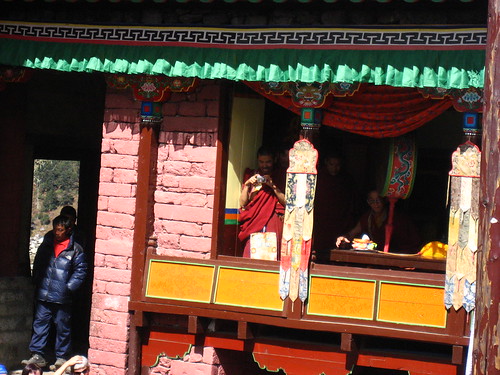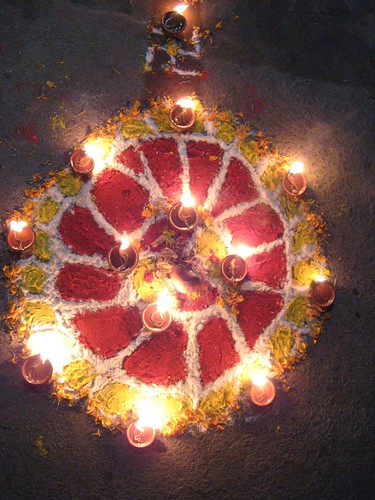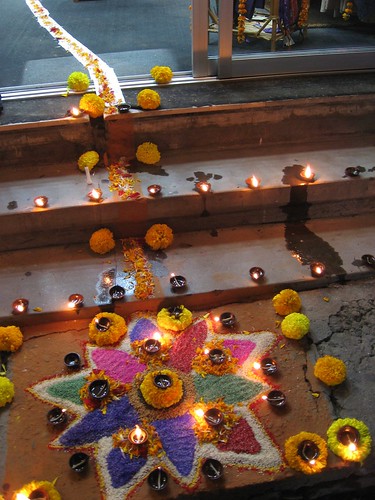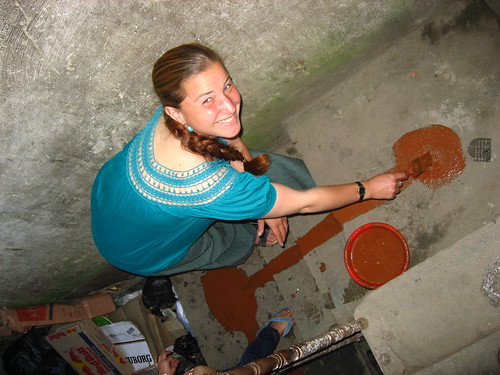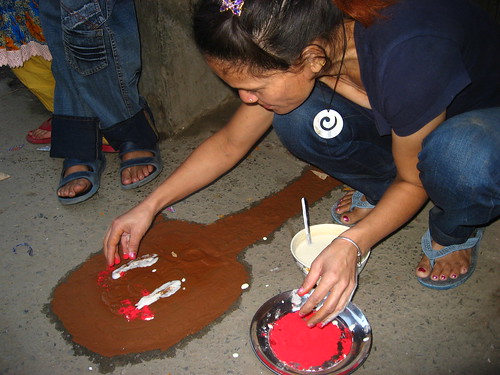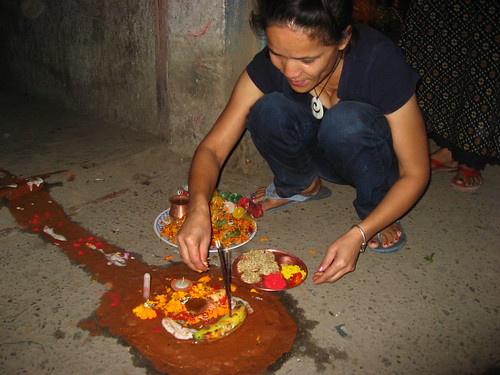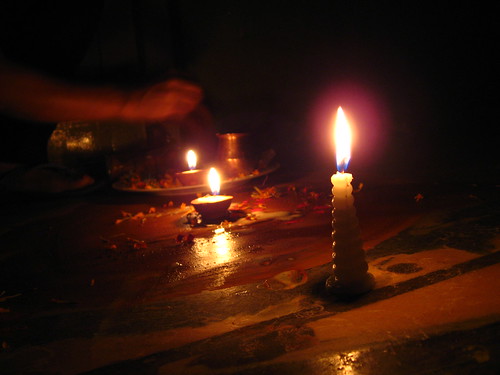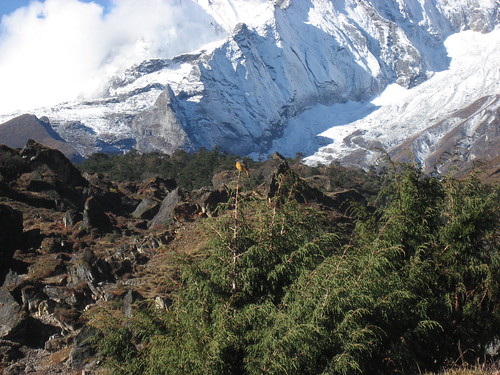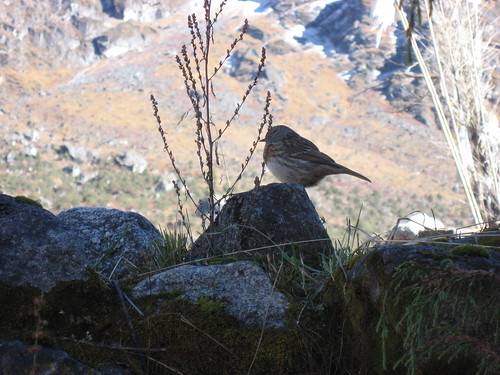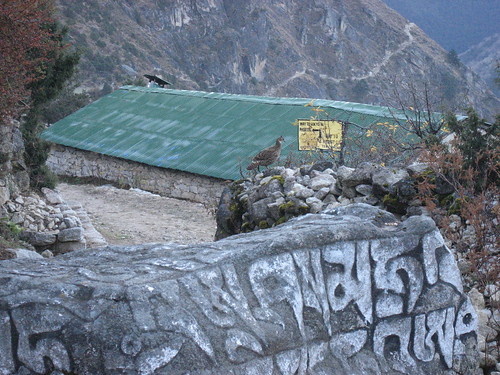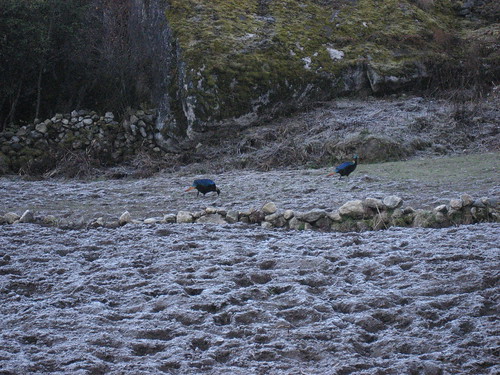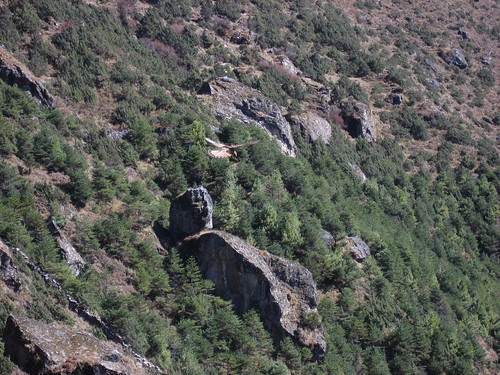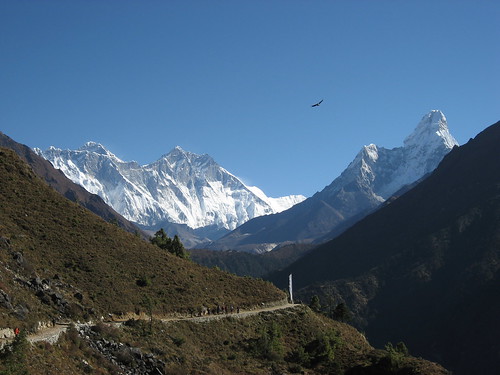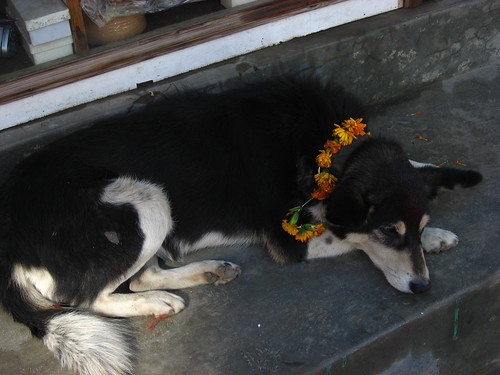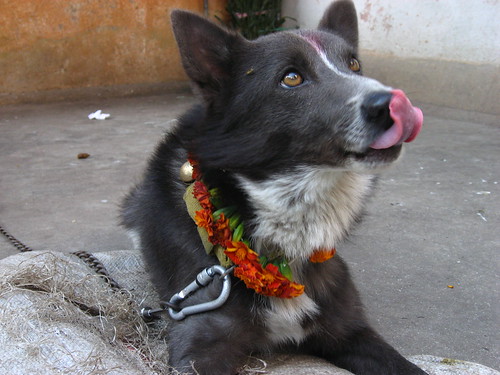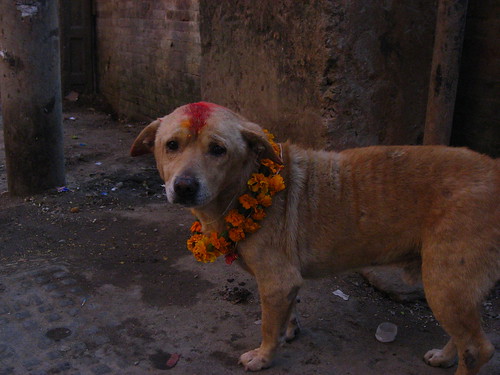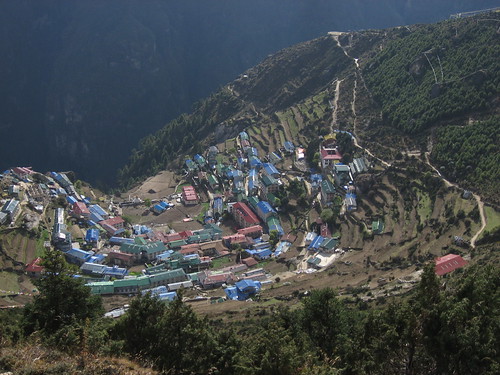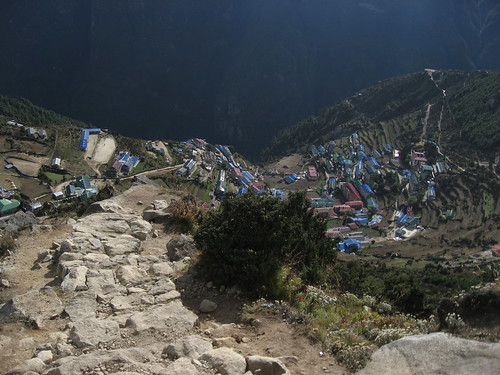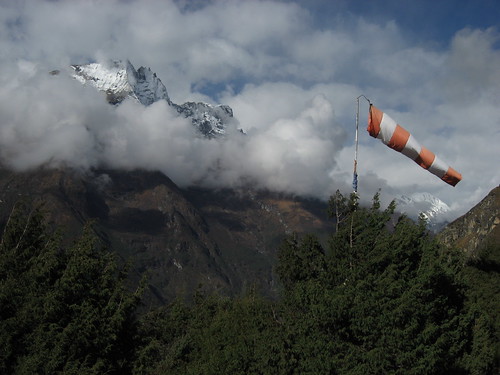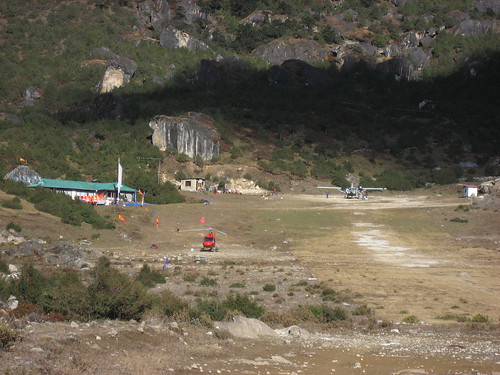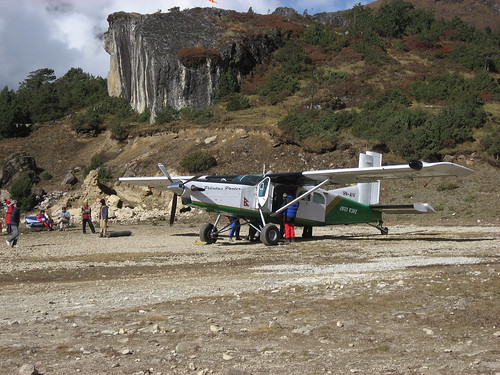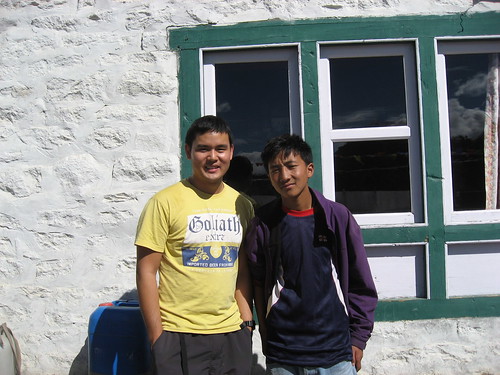The festival of Mani Rimdu at Tengboche, sometimes referred to that 'dancing monk' festival, takes place in the 9th Tibetan month, usually sometime in late October. The main festivities last three days - I believe right after the full moon, though preparations start much earlier. The 16th day is the most important day when the monks from the monastery perform a number of masked dances in the courtyard of the monastery.
The name 'Mani Rimbu' comes from the 'Mani', which forms part of the Avalokiteshvara (or Chenrezig in Tibetan) chant 'Om mani padme hum'. 'Rimdu' is from 'rildu', referring to the small red pills that are blessed and distributed at the main empowerment ceremony. (Note: I'm not sure how the alveolar lateral becomes a bilabial nasal here, not an alveolar nasal 'n', but it could just be one more step in the process of sound dissimilation.)
The Tengboche Monastery
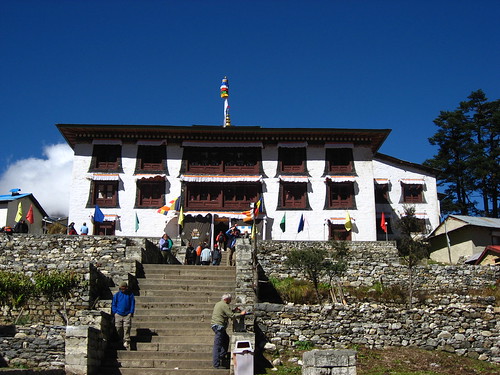
It just so happened that the main festival day was taking place right in the middle of my short visit to Khumbu, so I decided to do the three hour hike from Khumjung to Tengboche (and back) to catch a glimpse of some of the festivities. It was a fun day, though I don't know if I would've liked to have spent the whole day and a night at the festival by myself (Sara had gone off trekking to the stunningly gorgeous area around Gokyo). In any case, I took her advice and got the little sheet of paper at the visitor centre which explained each dance.
While I arrived around 9.30am, the first dance I got to see was about an hour later (and after a piece of applie pie and pot of milk tea). The
Ging-cham is performed by four dancers - two females with drums and two males with cymbals who act as the heralds of Dorje Trollo, the 'wrathful appearance' of the Rinpoche who established Buddhism in Tibet (I'm not quite sure why he would be wrathful), and a kind of patron of the monastery.
Ging-cham
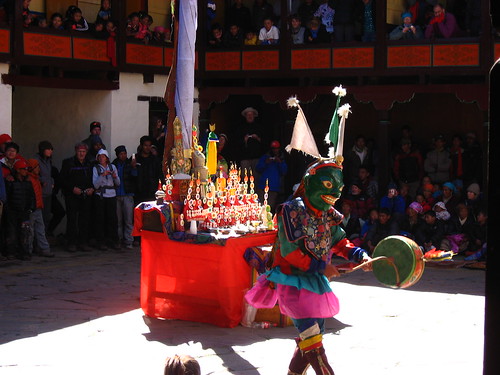
Dorje Trollo appears
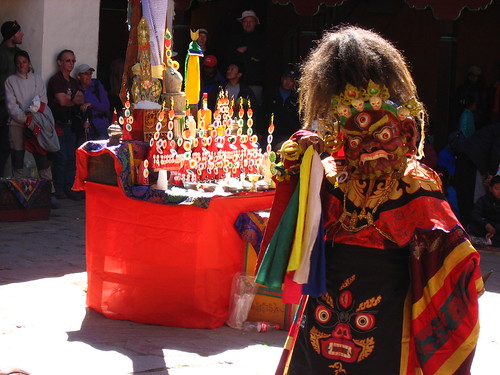 Nga-cham
Nga-cham was my favourite dance, featuring a pair of 'skeleton' dancers with rather monkey-like movements.
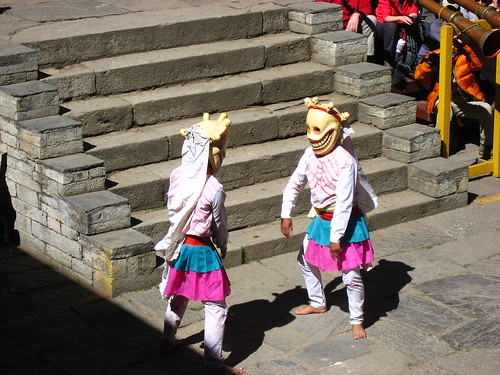
At one point, the two skeletons take the ends of a rope, in the middle of which is tied a dough figure which represents evil. Two dancers in big black hats destroy this dough figure.
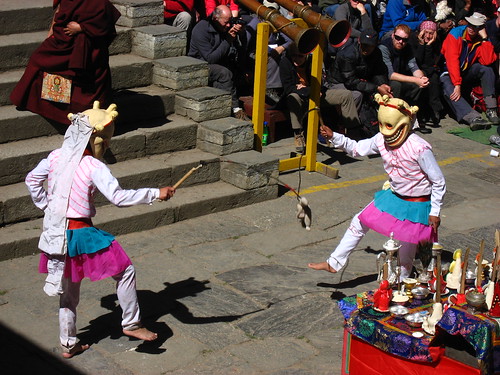
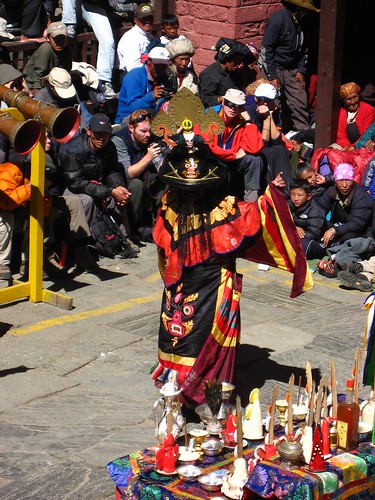
As a comic interlude, a monk appears as an old man, named 'Mi Tsering', who grabs an audience member, usually a poor unsuspecting tourist and drags them around the courtyard making them do silly things from exchanging hats to mixing flour and water throwing the mixture at people in the crowd. I'd heard the girl who got dragged along from the ride say earlier that she had to get to Machhermo - about 5 hours away - by nightfall. The poor thing...

Between dances, monks would come around and offer biscuits and milk tea. I'm not a big fan of hot drinks in small plastic cups, though it stop me from having my 6th cup of the morning.

There were a number of other dances, but I figured I needed to leave by early enough to get back to Khumjung by nightfall. Before I left, I was glad I managed to spot a monk with his digital camera filming some of the dancing - after all, why should the tourists get all the fun?
